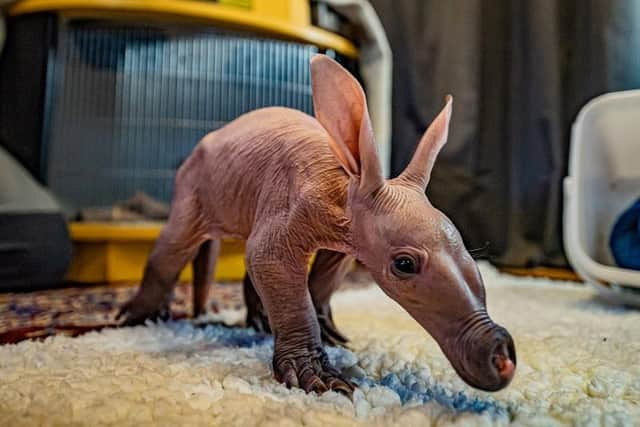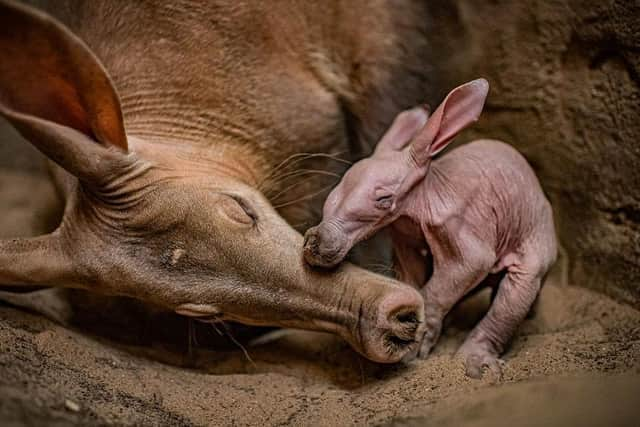Adorable pictures show the first ever baby aardvark born at Chester Zoo after arriving into the world weighing just 1kg
and live on Freeview channel 276
Keepers were left overjoyed when they discovered the cute new arrival with mum Oni, eight, and dad Koos, six, after it was born overnight on January 4.
The sex of the new calf is yet to be determined but staff have nicknamed the youngster Dobby due to its resemblance to the much-loved Harry Potter character.
Advertisement
Hide AdAdvertisement
Hide AdThe ant-eater, which is native to sub-Saharan Africa, was born with droopy ears, completely hairless, wrinkly and with giant claws.


The baby is currently being hand-reared each evening by staff who will feed it every few hours through the night for around five weeks, to help it gain strength.
The aardvark is the first to be born at Chester Zoo in the charity's 90 year history.
Dave White, team manager at the zoo, said: “This is the very first aardvark to be born at the zoo and so it’s a momentous landmark for us and a real cause for celebration. We’re overjoyed.
Advertisement
Hide AdAdvertisement
Hide Ad“As soon as we spotted the new baby next to mum we noticed its uncanny resemblance to the Harry Potter character, Dobby, and so that’s the calf’s nickname for the time being.


"We won’t though know for certain whether it’s male or female for several more weeks until the calf is a little older.
“Aardvark parents are notorious for being a little clumsy around their newborns.
"With the baby being so tiny and fragile, we’re therefore protecting it from any accidental knocks and bumps by helping mum out with supplementary feeding sessions throughout the night, just until the calf is a little stronger.
Advertisement
Hide AdAdvertisement
Hide Ad"So, in the evening, when the parents are out exploring and feeding, we carefully place the calf into a special incubator and take it home to feed with warm milk every few hours.
"The calf then spends the daytime bonding and snuggled up with mum Oni inside her burrow – and they’re both doing great together.”
Aardvarks are threatened by habitat loss as a result of agricultural development, which also bring them into conflict with local farmers.
They are also hunted for their meat.
With only 66 aardvarks found in zoos across Europe, and 109 in zoos worldwide, Chester is one of just a small number of zoos caring for the species.
Advertisement
Hide AdAdvertisement
Hide AdMark Brayshaw, curator of mammals at the zoo, added: “Aardvarks are quite secretive creatures, which are mostly only ever active in darkness, and so some aspects of how they go about their lives remain relatively unknown.
"Caring for species like aardvarks in zoos enables us to learn more about them - how they live, their behaviours and their biology.
"All of this information is then shared with other leading conservation zoos and helps to better inform our efforts to preserve their numbers.
“This new calf joins a conservation breeding programme that only a handful of zoos are part of globally.”
Advertisement
Hide AdAdvertisement
Hide AdThe word aardvark translates to “earth pig” in the language of Afrikaans.
The nocturnal animals use their long noses and keen sense of smell to sniff out ants and termites, which they lap up with a 25cm long tongue covered in sticky saliva.
Aardvarks use their powerful claws to tear open termite mounds, as well as to dig underground burrows in which they sleep.